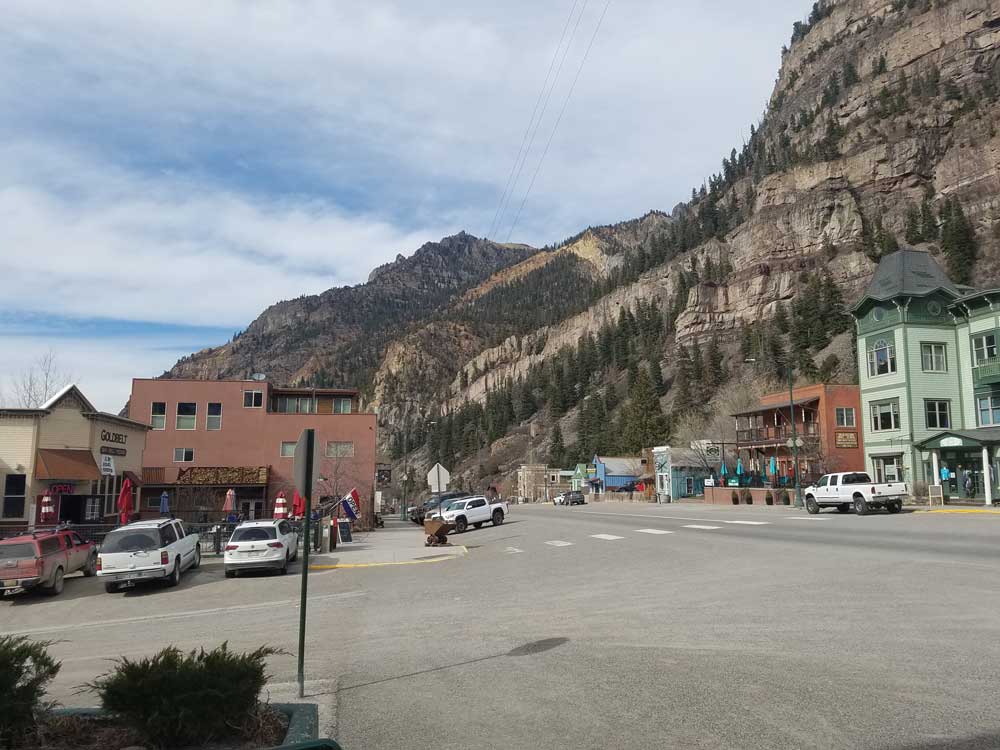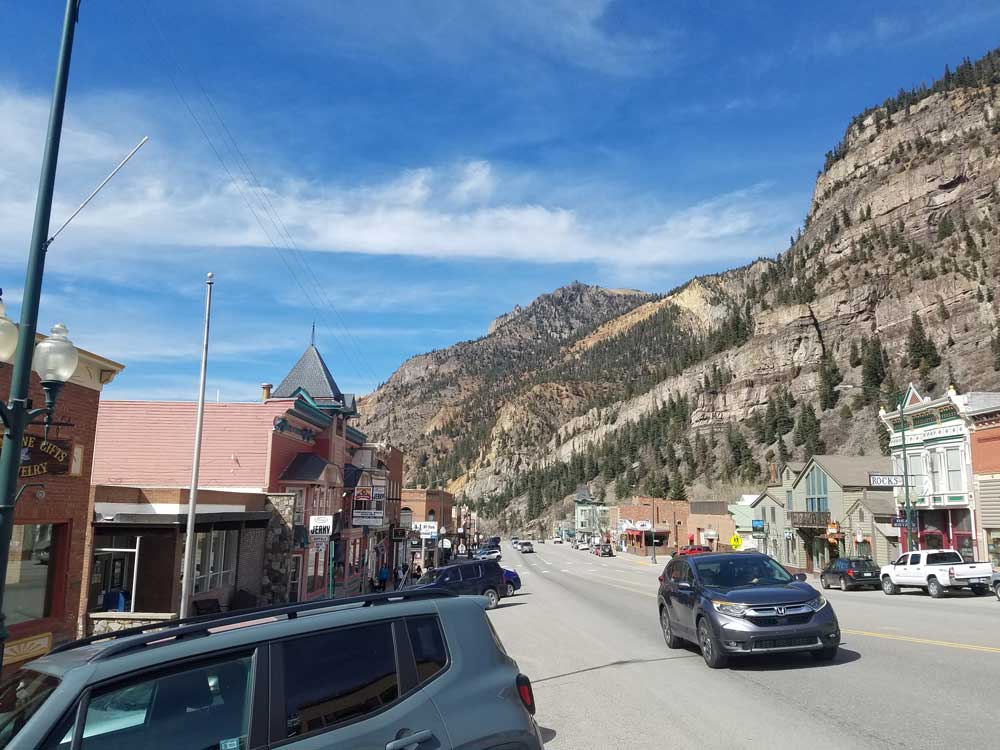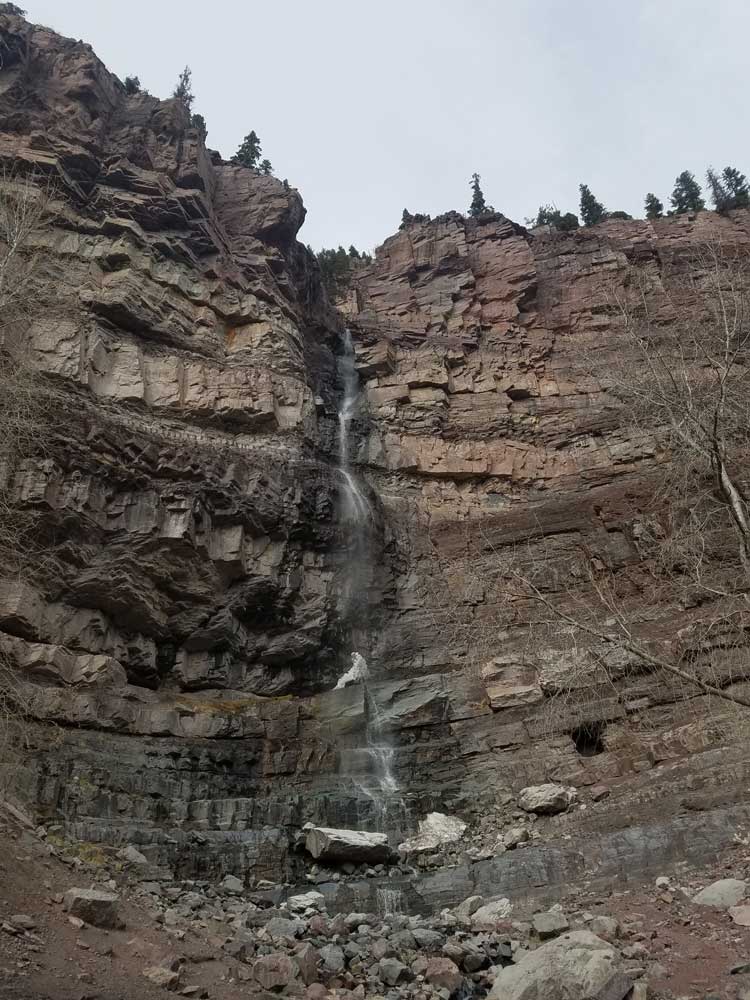Ouray's climate, natural alpine environment, and scenery has earned it the nickname, "Switzerland of America"
Ouray
Montrose, 36 miles
From Grand Junction (96 miles): Follow I-70BL E and 29 Rd to US-50 E in Orchard Mesa. Use any lane to turn left onto US-50 E. Continue on G50 Rd. Take G Rd to US-50 E/S Main St in Delta. Follow US-50 E to US-550 S in Ouray.
Overview
The City of Ouray is the county seat and the most populous municipality of Ouray County, Colorado. Ouray's climate, natural alpine environment, and scenery has earned it the nickname, "Switzerland of America".
History
Originally established by miners seeking silver and gold in the surrounding mountains, the town at one time boasted more horses and mules than people. Prospectors arrived in the area in 1875. In 1877, William Weston and George Barber found the Gertrude and Una gold veins in Imogene Basin, six miles south southwest of Ouray. Thomas Walsh acquired the two veins and all the open ground nearby. In 1897, Walsh opened the Camp Bird Mine, adding a twenty-stamp mill in 1898, and a forty-stamp mill in 1899. The mine produced almost 200,000 ounces of gold by 1902, when Walsh sold out to Camp Bird, Ltd. By 1916, Camp Bird, Ltd., had produced over one million ounces of gold.

At the height of the mining, Ouray had more than 30 active mines. The town—after changing its name and that of the county it was in several times—was incorporated on October 2, 1876, named after Chief Ouray of the Utes, a Native American tribe. By 1877 Ouray had grown to over 1,000 in population and was named county seat of the newly formed Ouray County on March 8, 1877.
The Denver & Rio Grande Railway arrived in Ouray on December 21, 1887. It would stay until the automobile and trucks caused a decline in traffic. The last regularly scheduled passenger train was September 14, 1930. The line between Ouray and Ridgway was abandoned on March 21, 1953.
The entirety of Main Street is registered as a National Historic District with most of the buildings dating back to the late nineteenth century. The Beaumont Hotel and the Ouray City Hall and Walsh Library are listed on the National Register of Historic Places individually, while the Ouray County Courthouse, St. Elmo Hotel, St. Joseph's Miners' Hospital (currently housing the Ouray County Historical Society and Museum), Western Hotel, and Wright's Opera House are included in the historic district.
Ouray is located in the San Juan Mountains of southwestern Colorado. It is about 40 miles (64 km) south of Montrose. It is only 10 miles (16 km) northeast of Telluride, but due to the severity of the landscape, the drive is about 50 miles (80 km). Ouray is connected to Silverton and then Durango to the south by Red Mountain Pass which crests at just over 11,000 feet (3,400 m). The drive along the Uncompahgre River and over the pass is nicknamed the Million Dollar Highway. Yankee Boy Basin is located a few miles from the town.
The majority of Ouray's economy is based on tourism. Ouray bills itself as the "Switzerland of America" because of its setting at the narrow head of a valley, enclosed on three and a half sides by steep mountains.
Much of the town tourism is focused on ice climbing, mountain biking, hiking, trail running and off-roading in four-wheel drive (4WD) expeditions into the San Juan Mountains. Ouray has also become a popular destination for motorcyclists, as it marks the beginning of the Million Dollar Highway. This stretch of highway connects Ouray to its neighboring cities of Silverton and Durango. The Million Dollar Highway is frequently regarded as one of the most beautiful roads in Colorado, but is also considered one of the most dangerous due to its sharp turns, steep ledges, and lack of guard rails. Destinations include Yankee Boy Basin, Engineer Mountain, and Black Bear Road.
Ouray is a popular destination for ice climbing. The world's first ice climbing park, expanding on previously-popular natural falls, consists of dozens of frozen waterfalls from 80 to 200 feet (61 m) high farmed along more than a mile of the Uncompahgre Gorge. The water is supplied by a sprinkler system developed and maintained by a volunteer organization and supported by donations from local businesses, gear manufacturers and climbers. The Ouray Ice Park is free and attracts climbers from around the world. The annual Ice Festival is a weekend-long extravaganza of contests, exhibitions and instruction with many of the world's top ice climbers. Ice climbing has been a boon to the local economy as well, with hotels and restaurants that previously closed through the winter months now staying open to accommodate climbers.
There are five developed hot springs in Ouray and nearby Ridgway. These include thermal pools and vapor caves. Ouray Hot Springs is the largest facility with numerous pools.
There are numerous waterfalls along the road from Durango to Ouray, and within the city limits there are two waterfalls within easy reach. Cascade Falls is a short, 1/4 mile hike accessible from a parking lot on 8th Avenue. Box Canyon Falls is at the southwest edge of Ouray.
Ouray was originally a mining town. The largest and most famous mine is the Camp Bird Mine, the second-largest gold mine in Colorado, established by Thomas Walsh in 1896. Even though there was an operation permit filed in 2007, the mine still remains inactive. During its lifespan, the mine produced about 1.5 million troy ounces of gold, and 4 million troy ounces of silver, from 1896 to 1990. In 1995 the old milling equipment "The Crusher" was disassembled and sold to a smaller mine located in Mongolia where it operated for about two years. The vacant mine can be seen on the steep 2WD road leading to the 4WD roads to Yankee Boy Basin and Imogene Pass.
This article uses material from the Wikipedia article "Ouray, Colorado", which is released under the Creative Commons Attribution-Share-Alike License 3.0

